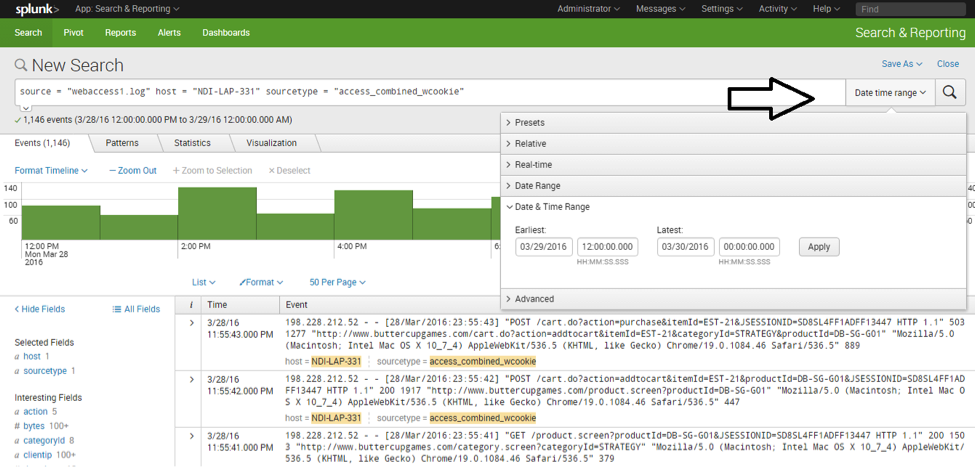

Geom : It helps to give some external lookups with possible geographic locations by using this Splunk command.Iplocation: Helping for gathering information regarding provided IP address, information like country, state, city, longitude, latitude, and other critical details of the IP.These commands aid in identifying geographical locations within reports, generating necessary metrics, identifying predictions or trends, and facilitating the creation of comprehensive reports. Managerial personnel primarily utilize advanced commands to execute those tasks. Splunk Command users frequently need to perform some of critical tasks. Typehead: This Helps in returning heading information with some specified prefix.Metadata: Helping with returning all the data like sourcing list, sourcing type, and indexing details with host information.Eventcount: Helping with returning event numbers for one defined index on the data set.Dbinspect: Helping to return information of some specific index that can be utilized later.Data model: The command is used to retrieve information about the model object or a specific data model.Audit: Helps to return all the audit trail information, which can be stored easily in one of the indexes defined locally as an audit index.Some of those kinds of requiring intermediate commands are mentioned below: Several other popular Splunk commands have been used by the developer who is not very basic but working with Splunk more those commands are required to execute. Transaction: This statement helps properly group specific search results into a conditional transaction.Stats: The statement helps to provide some statistical value or some of the grouped value, which is available optionally by specific fields.Set: It helps perform set performances like intersect, minus activity on the sub-search result.


#Splunk advanced search query examples software#
Web development, programming languages, Software testing & others Basic Commands
#Splunk advanced search query examples free#
Start Your Free Software Development Course


 0 kommentar(er)
0 kommentar(er)
